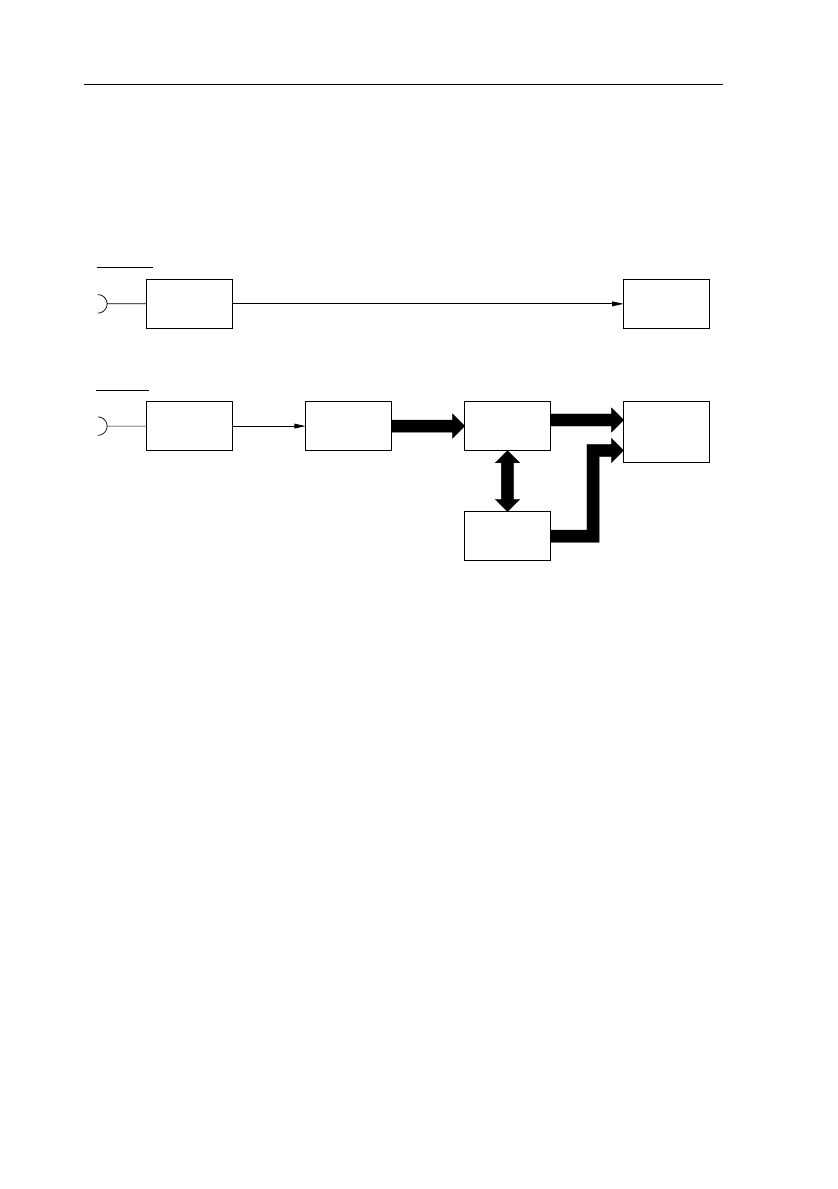
4 - 30 HOW TO USE THE INSTRUMENT
4.6 DIGITAL ACQUISITION AND STORAGE
This section gives you a short introduction to digital acquisition and storage in
order to provide the basic knowledge and terms. This information is necessary for
you to understand all digital statements in the following sections of the manual.
In the
analog
mode the input signals are directly displayed on the screen.
In the
digital
mode the channels are applied to the input stage of the digital circuit:
the analog-to-digital convertors (ADC’s). The ADC’s convert the analog signal(s)
into digital data. Depending on the selected timebase speed, this sa2pling and
conversion is done at a rate of up to 200 million samples per second (200 MS/s).
This high sampling rate allows you to observe fast signal variations.
Digital information from the adc is then stored in a Acquisition Memory. The data
acquisition in this memory can be stopped to freeze the trace on the screen. You
can also store (save) complete registers or separate signals into a "background"
memory, called Register Memory. Traces can be stored as long as you like and
can be recalled at any time.
The CombiScopes in this range have a standard memory of 8K. The record length
for each trace is the maximum number of samples divided by the number of
traces. With the standard scope, the memory depth of 8K is available for two
channels. The memory is partitioned so that 1x8K, 2x4K or 4x2K records can be
captured. For maximum update rate, records can be made as short as 512 points.
If the memory expansion option is installed, the record length can be adjusted
between 32K and 512 points.
INPUT
STAGE
INPUT
STAGE
ADC
ACQUISITION
MEMORY
REGISTER
MEMORY
DISPLAY
DISPLAY
ANALOG:
DIGITAL:
ST6721
signal
data


















